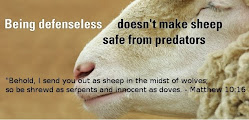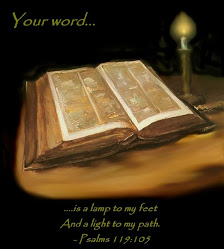
Moriel Ministries Be Alert! has added this Blog as a resource for further information, links and research to help keep you above the global deception blinding the world and most of the church in these last days. Jesus our Messiah is indeed coming soon and this should only be cause for joy unless you have not surrendered to Him. Today is the day for salvation! For He is our God, and we are the people of His pasture and the sheep of His hand. Today, if you would hear His voice, - Psalms 95:7
Saturday, December 13, 2008
Mormons, Muslims forge close ties
They see in each other a religion viewed with suspicion in U.S. and share an emphasis on the family
LOS ANGELES TIMES [Tribune Company] - By David Haldane - April 13, 2008
The Mormon Church has to be among the most outgoing on Earth; in recent years its leaders have reached out to, among others, Hispanics, Koreans, Catholics and Jews.
One of the most enthusiastic responses, however, has come from what some might consider a surprising source: U.S. Muslims.
"We are very aware of the history of Mormons as a group that was chastised in America," says Maher Hathout, a senior adviser to the Muslim Public Affairs Council in Los Angeles. "They can be a good model for any group that feels alienated."
Which perhaps explains an open-mosque day held last fall at the Islamic Center of Irvine. More than half of the guests were Mormons.
"A Mormon living in an Islamic society would be very comfortable," said Steve Young, a member of the Church of Jesus Christ of Latter-day Saints attending the event.
The sentiment is echoed by Muslims. "When I go to a Mormon church, I feel at ease," said Haitham Bundakji, former chairman of the Islamic Society of Orange County. "When I heard the (Mormon) president speak a few years ago, if I'd closed my eyes I'd have thought he was an imam."
Though the relationship has raised eyebrows and provided ammunition for critics of both religions, Mormons and Muslims have deepening ties in the United States.
What binds them has little to do with theology: Mormons venerate Jesus as interpreted by founder Joseph Smith, while Muslims view Muhammad as God's prophet. Based on shared values and a sense of isolation from mainstream America, the connection was intensified by the Sept. 11 terrorist attacks and cemented by the Southeast Asia tsunami. Brigham Young University in Utah, the Mormon church's major institution of higher learning, features what is thought to be one of the world's best programs for translating classic Islamic works from Arabic to English. Though created primarily for academic purposes, the results have impressed Muslims flattered by the close attention.
"It shows they have a keen interest in the Muslim world," said Levent Akbarut, a member of the Islamic Congregation of La Canada Flintridge (Los Angeles County).
And Mormons and Muslims say they often are co-hosts of educational and social programs at which, though some may be angling for long-term doctrinal influence, very little open proselytizing of each other seems to take place. "We have a very close and friendly relationship," said Keith Atkinson, West Coast Mormon spokesman.
Mormons "explain our faith to anyone who will listen" and "treat Muslims like anybody else," said Elder Dallin Oaks, a member of the Quorum of the 12 Apostles, one of the church's top governing bodies in Salt Lake City. But Oaks added that "we don't preach to people who would be disenfranchised" or likely offended.
Arnold Green, a history professor at BYU, has traced how early Mormons in the 19th century were hounded by accusations that church founder Smith was the American Muhammad. The first Mormons angrily denied any connection to the Muslim prophet but gradually accepted some comparisons, particularly that both religions were founded by post-Christian prophets with strong sectarian views. "As the church grew into a global faith," Green wrote in a 2001 essay, "its posture toward Islam became ... more positive" until, today, "the two faiths have become associated in several ways, including Mormonism's being called the Islam of America."
Both religions strongly emphasize family. They tend toward patriarchy, believing in feminine modesty, chastity and virtue. And although Islam discourages dancing involving both sexes, Mormons report that church-sponsored "modesty proms" commonly draw Islamic youths.
Both faiths adhere to religion-based health codes, including prohibitions against alcohol, but Mormons and Muslims share something more: membership in quickly growing minority religions that many other Americans have sometimes viewed with suspicion and scorn.
"We both come from traditions where there has been persecution in the past and continues to be prejudice," said Steve Gilliland, Mormon director of Muslim relations for Southern California. "That helps us Mormons identify with Muslims."
A recent national survey by the Pew Research Center for the People & the Press and the Pew Forum on Religion & Public Life found that although a thin majority of those polled expressed positive opinions of Muslims and Mormons, the number was significantly less than those favoring Roman Catholics or Jews.
More than half the respondents said they had little or no awareness of the precepts and practices of either faith. But 45 percent saw Islam as more likely than other religions to encourage violence, and 31 percent said that Mormons weren't Christian.
Armand Mauss, a Mormon and professor emeritus of sociology at Washington State University specializing in religious movements, said that unlike mainstream Christians and Jews, Muslims and Mormons "tend to make fairly stringent demands for religious conformity on their members." These practices, he said, include discouraging marriage outside the religion and observing dietary laws, such as the Mormon prohibition against tobacco, alcohol and caffeine.
But the clincher, according to Mauss, is that both communities "have been stung in recent years by the recurrence of scandals over which they have no control." For Muslims, the obvious example is Sept. 11.
For Mormons, Mauss says, the problem is polygamy, which, though rejected by the mainstream church more than a century ago, is still the first thing that occurs to many Americans when they think about the religion.
And scattered throughout the Internet are numerous tracts, many by evangelical Christians, comparing the two religions in less-than-complimentary terms. "Modern Mohammedanism has its Mecca in Salt Lake," reads one. "Clearly the Quran was Joseph Smith's model, so closely followed as to exclude even the poor pretension of originality in his foul 'revelations.' "
In Southern California, the relationship between the two religions became closer after the Los Angeles riots in 1992, when the Mormon Church, hoping to promote diversity, invited several ethnic and religious groups to attend the opening of its new temple in San Diego. Muslims responded in higher numbers and with greater enthusiasm than most others. The church later feted prominent Muslims in Salt Lake City.
The relationship deepened with Sept. 11, 2001. In the months that followed, Mormons nationwide opened their churches to Islamic worshipers fearful of reprisals in their mosques. When Muslims needed a cannery to process the Bosnia-bound beef slaughtered for the annual Eid al-Adha observance, the Mormons offered theirs in Utah.
Following the tsunami that devastated many Islamic communities, the Mormon church, which has a history of contributing to a wide range of charities, began working closely with Islamic Relief. Though it had helped Muslims before - providing 195 tons of powdered milk, hygiene kits, medical supplies and other provisions - it had never previously worked with this major Islamic agency, or on such a scale.
And though the church continues to aid non-Muslim causes, only two of the six major disaster assistance efforts listed on its Web site since 2004 - Hurricane Katrina and Africa measles vaccination campaigns - did not primarily affect Islamic nations.
The effects of Muslim-Mormon interaction are showing in subtle ways too. Spending time with Mormons, Bundakji says, has inspired him to stop drinking coffee.
"I thought they had a good idea," he says. "Now I don't drink caffeine, and I don't have headaches anymore."
This article also appeared on page B - 1 of the 4-13-08 San Francisco Chronicle
http://www.sfgate.com/cgi-bin/article.cgi?f=/c/a/2008/04/13/MN0410197R.DTL
FAIR USE NOTICE: This blog contains copyrighted material the use of which has not always been specifically authorized by the copyright owner. We are making such material available in our efforts to advance understanding of religious, environmental, political, human rights, economic, democracy, scientific, and social justice issues, etc. We believe this constitutes a 'fair use' of any such copyrighted material as provided for in section 107 of the US Copyright Law. In accordance with Title 17 U.S.C. Section 107, the material on this site is distributed without profit to those who have expressed a prior interest in receiving the included information for research and educational purposes. For more information go to: http://www.law.cornell.edu/uscode/17/107.shtml. If you wish to use copyrighted material from this site for purposes of your own that go beyond 'fair use', you must obtain permission from the copyright owner.
Subscribe to:
Comments (Atom)





